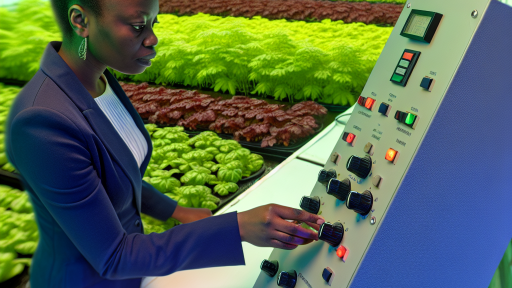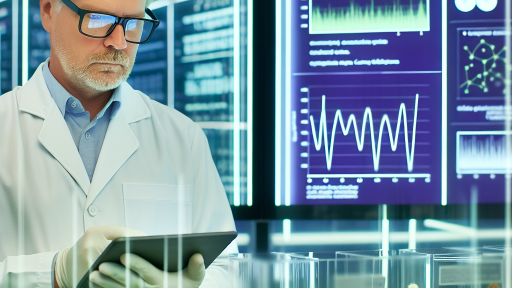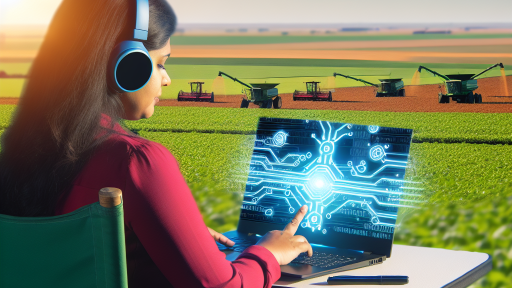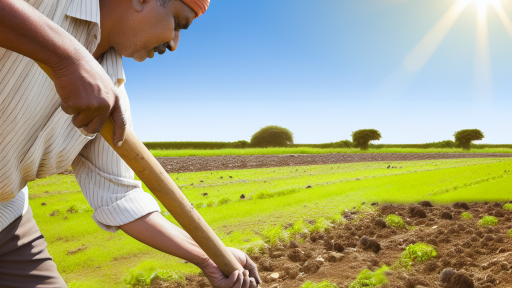Definition of Hydroponics and Aquaponics
Understanding Hydroponics
Hydroponics is a method of growing plants without soil.
Instead, it uses mineral nutrient solutions in a water solvent.
This technique allows for precise control over nutrient delivery.
It minimizes issues like soil-borne diseases.
Interestingly, hydroponics can produce higher yields than traditional farming.
Vertical farming often employs hydroponic systems.
Users can grow plants in smaller spaces efficiently.
Understanding Aquaponics
Aquaponics combines aquaculture and hydroponics in one system.
In this system, fish waste provides nutrients for the plants.
Subsequently, the plants filter and purify the water for the fish.
This creates a symbiotic relationship beneficial for both parties.
This sustainable method increases efficiency and reduces waste.
Moreover, aquaponics can produce crops and fish at the same time.
This integrated approach maximizes resource use.
Key Differences Between Hydroponics and Aquaponics
Hydroponics relies solely on nutrient solutions.
Transform Your Agribusiness
Unlock your farm's potential with expert advice tailored to your needs. Get actionable steps that drive real results.
Get StartedAquaponics, conversely, utilizes both fish and plants for growth.
Moreover, hydroponics typically requires more management in nutrient control.
Aquaponics fosters a self-sustaining ecosystem within the system.
While hydroponics focuses on vegetable production, aquaponics can include seafood.
Each method has its advantages and is suitable for different goals.
Both systems contribute to innovative and sustainable farming practices.
Key Terminology in Hydroponics and Aquaponics
Several terms are crucial for understanding these farming methods.
- Solution: A mixture where nutrients are dissolved in water.
- Substrate: A medium that supports plant growth in hydroponics.
- Fish Stock: The type and amount of fish raised in aquaponics.
- Nutrient Film Technique: A hydroponic setup allowing a thin film of nutrients to flow over plant roots.
- Cycling: The process of establishing beneficial bacteria in aquaponics.
- pH Level: The acidity or alkalinity of the water affecting nutrient availability.
Historical Development
Origins of Hydroponics
Hydroponics has ancient roots, dating back to civilization’s earliest agricultural practices.
The Hanging Gardens of Babylon may be one of the earliest examples of soilless growing techniques.
In the 17th century, researchers like Francis Bacon began to experiment with growing plants in water.
Modern hydroponics emerged in the early 20th century through scientific studies.
Dr. William Frederick Gericke from the University of California popularized the term in the 1930s.
He conducted successful experiments, demonstrating its potential for large-scale agriculture.
Origins of Aquaponics
Aquaponics combines aquaculture and hydroponics into a sustainable system.
Its roots trace back to ancient practices in various cultures, notably the Aztecs.
The Aztecs created floating gardens, using water from nearby lakes to cultivate crops.
In the 1970s, researchers began to understand the benefits of integrating fish farming with plant cultivation.
Dr. Larry E. Andrews expanded aquaponics systems during this time.
He combined scientific principles with traditional aquaculture and hydroponic methods.
Evolution of Hydroponics
In the late 20th century, hydroponics experienced significant advancements.
Technology improved, and new growing media emerged, such as rock wool and clay pellets.
Commercial and home systems began to flourish, enabling wider adoption.
Urban farming and vertical farming utilized hydroponics to maximize space efficiently.
Today, hydroponics is recognized for its role in sustainable food production.
Showcase Your Farming Business
Publish your professional farming services profile on our blog for a one-time fee of $200 and reach a dedicated audience of farmers and agribusiness owners.
Publish Your ProfileEvolution of Aquaponics
Aquaponics gained popularity in the early 2000s as sustainability became a global focus.
These systems proved beneficial in addressing food security issues.
Advancements in technology facilitated better monitoring and management of aquaponic ecosystems.
Educational institutions began offering courses and resources on aquaponic systems.
Community gardens increasingly adopted aquaponics due to its sustainable nature.
Now, various aquaponics businesses thrive, demonstrating its viability as a farming method.
Core Differences Between Hydroponics and Aquaponics
Overview of Systems
Hydroponics relies solely on nutrient-rich water to grow plants.
This system does not involve any soil or living organisms.
In contrast, aquaponics combines both plants and fish in a unified system.
The fish contribute nutrients, enhancing plant growth sustainably.
Technique Utilization
Hydroponics primarily uses techniques such as nutrient film technique (NFT) and deep water culture (DWC).
These methods focus on optimizing root access to nutrients and oxygen.
On the other hand, aquaponics employs a symbiotic approach between fish and plants.
Here, fish waste provides essential nutrients for plant growth.
Nutrient Management
In hydroponics, growers manage nutrient solutions precisely.
This ensures plants receive balanced essential components at all times.
Aquaponics requires a more dynamic nutrient management approach.
The balance depends on the fish’s health and waste production.
Environmental Considerations
Hydroponics often has a smaller environmental footprint compared to traditional farming.
It reduces water usage significantly while maximizing space utilization.
Aquaponics goes further by promoting biodiversity and ecological balance.
This method creates a closed-loop system that conserves resources.
Setup and Maintenance
Setting up hydroponics can be relatively straightforward and cost-effective.
However, it requires consistent monitoring of nutrient levels.
Aquaponics, while more complex, offers benefits that can outweigh initial challenges.
Regular care of both plants and fish is essential for success.
You Might Also Like: Managing Soil pH for Optimal Crop Growth
Advantages of Hydroponics
High Yield Potential
Hydroponics can significantly increase crop yields.
This method allows plants to grow faster and larger.
Consequently, growers can produce more food in less time.
Additionally, hydroponics eliminates many soil-borne diseases.
This results in healthier plants and better quality produce.
Space Efficiency
Hydroponic systems optimize space utilization.
They allow for vertical farming, maximizing limited areas.
For instance, rooftop gardens can thrive in urban settings.
Moreover, these systems can be set up indoors, avoiding outdoor space constraints.
This flexibility makes hydroponics suitable for various environments.
Resource Management
Hydroponics promotes efficient use of water and nutrients.
It typically uses 90% less water than traditional farming.
This is crucial in regions facing water scarcity.
Showcase Your Farming Business
Publish your professional farming services profile on our blog for a one-time fee of $200 and reach a dedicated audience of farmers and agribusiness owners.
Publish Your ProfileFurthermore, hydroponics utilizes a closed-loop system.
This minimizes waste and reduces the need for fertilizers.
As a result, growers can enjoy lower operational costs.
Learn More: Using Satellite Imagery For Precision Farming
Advantages of Aquaponics
Sustainability
Aquaponics significantly enhances sustainability in food production.
This system uses less water than traditional farming methods.
It recycles water efficiently, minimizing waste.
By combining fish and plant cultivation, it reduces dependency on chemical fertilizers.
This approach promotes a circular economy that conserves resources.
Ecosystem Balance
Aquaponics creates a harmonious ecosystem.
It fosters a symbiotic relationship between fish and plants.
This balance reduces pest populations naturally.
Consequently, it minimizes the need for pesticides.
Furthermore, it promotes biodiversity within the system.
Nutrient Cycling
Aquaponics ensures efficient nutrient cycling.
Fish waste provides essential nutrients for plant growth.
Meanwhile, plants filter and purify the water for fish.
This reciprocal relationship enhances overall plant and fish health.
Ultimately, it leads to higher yields over time.
You Might Also Like: Machine Learning Applications In Crop Management
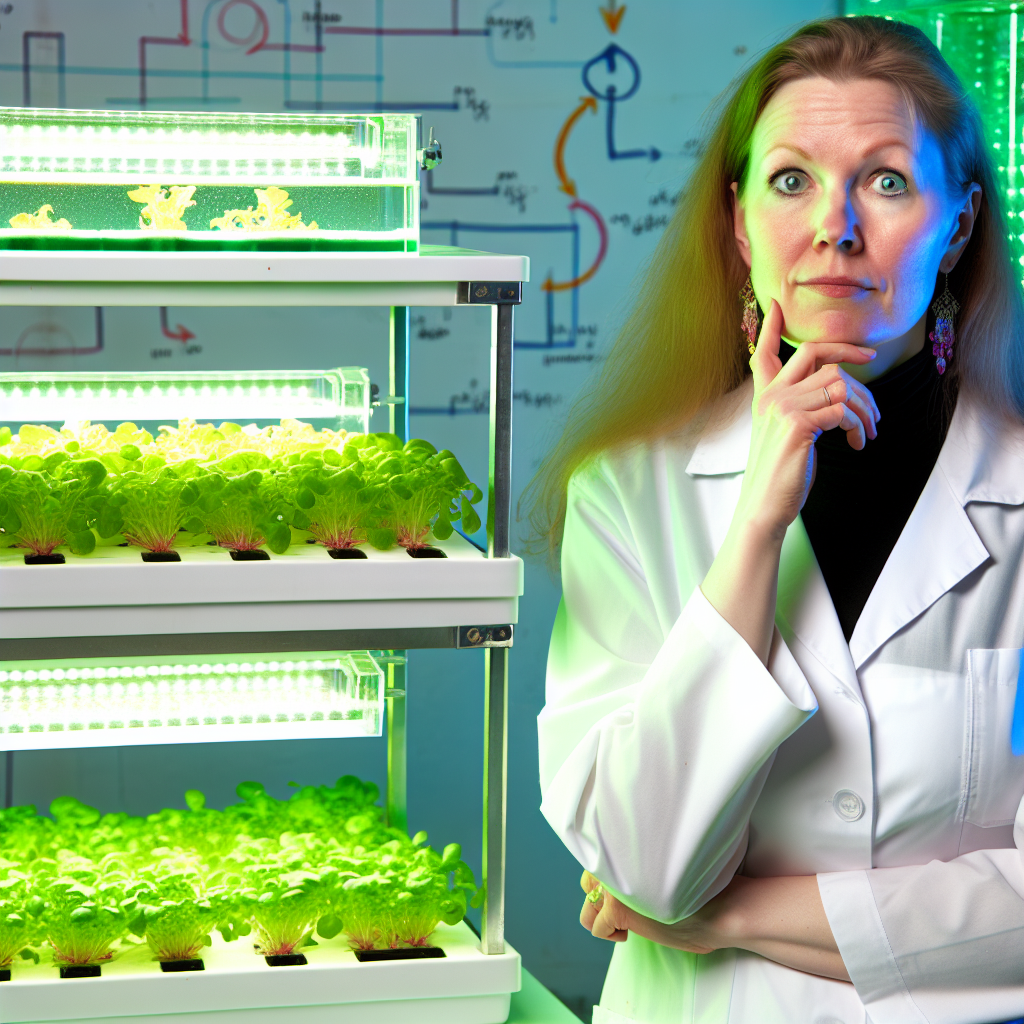
Challenges and Limitations: Comparing Resource Needs and Maintenance for Each System
Resource Needs
Hydroponics requires a variety of materials and resources.
Growers need pumps, nutrient solutions, and growing mediums.
Water is crucial, but systems often recirculate it efficiently.
Energy costs can be a significant factor in hydroponics.
Aquaponics, on the other hand, combines fish farming with plant growth.
This system requires fish tanks, pumps, and filtration systems.
Moreover, it needs additional water to maintain fish health.
Nutrient management is unique, as fish waste supplies nutrients.
Maintenance Requirements
Hydroponic systems need regular monitoring and adjusting.
Nutrient levels, pH, and water quality are critical to success.
Growers often face challenges in maintaining optimal conditions.
Additionally, pests and diseases can emerge without natural predators.
Aquaponics systems have their own maintenance hurdles.
Fish health must be carefully managed to avoid losses.
Moreover, checking water quality is vital for both fish and plants.
Growers often deal with algal blooms that complicate maintenance.
Overall Complexity
Hydroponics can be straightforward for experienced gardeners.
However, beginners may struggle with nutrient management.
In contrast, aquaponics introduces complexity with two living systems.
Balancing fish welfare and plant growth requires knowledge and time.
Showcase Your Farming Business
Publish your professional farming services profile on our blog for a one-time fee of $200 and reach a dedicated audience of farmers and agribusiness owners.
Publish Your ProfileBoth systems offer rewards but come with distinct challenges.
See Related Content: Best Practices In Crop Health Monitoring Systems
Environmental Impact
Analyzing Water Usage
Water is a critical resource in both hydroponics and aquaponics.
Hydroponics uses a closed-loop system to minimize waste.
This approach recirculates water, reducing overall consumption.
On the other hand, aquaponics integrates fish farming.
It utilizes fish waste to nourish plants, creating a symbiotic relationship.
Overall, aquaponics can use less water than traditional farming methods.
However, it requires more water than hydroponics due to fish needs.
Effective management of both systems is vital for sustainability.
Energy Consumption
Energy use varies between hydroponics and aquaponics systems.
Hydroponics typically relies on artificial lighting and pumps.
This can lead to higher energy costs, especially indoors.
Aquaponics, however, may require additional energy for maintaining fish habitats.
Both methods benefit from renewable energy sources.
Solar power can significantly lower operational costs.
Consequently, energy efficiency remains a key consideration for growers.
Waste Management
Waste management practices differ in hydroponics and aquaponics.
Hydroponic systems often produce chemical waste from nutrient solutions.
This waste requires careful disposal to avoid environmental harm.
Conversely, aquaponics generates waste that benefits plant growth.
Fish excretion provides essential nutrients to plants.
This creates a natural cycle, reducing the need for chemical fertilizers.
Thus, aquaponics can present a more sustainable waste management solution.
Market Trends and Future Prospects
The Increasing Demand for Hydroponic and Aquaponic Products
The market for hydroponic and aquaponic products is evolving rapidly.
Consumers are increasingly aware of sustainable agriculture practices.
This awareness drives demand for local and fresh food options.
Hydroponics offers efficient, soil-less farming solutions.
Aquaponics integrates fish farming with plant cultivation.
Both methods create a symbiotic relationship beneficial for food security.
Key Factors Fuelling Growth
Several trends contribute to the growth of these industries.
Urbanization increases the need for localized food production.
Moreover, climate change challenges traditional farming methods.
Innovations in technology enhance the efficiency of hydroponics.
Additionally, aquaponics promotes sustainable fishing practices.
These factors together create significant market opportunities.
Target Markets and Demographics
Understanding the target market is vital for success.
Urban consumers seek fresh, organic produce year-round.
Restaurants emphasize sourcing local ingredients for their menus.
Furthermore, health-conscious individuals prefer nutrient-rich options.
Showcase Your Farming Business
Publish your professional farming services profile on our blog for a one-time fee of $200 and reach a dedicated audience of farmers and agribusiness owners.
Publish Your ProfileThe demand spans diverse demographics, from families to gourmet chefs.
Future Prospects and Innovations
Future growth hinges on technological advancements and education.
Investments in research can improve system efficiencies.
Furthermore, public awareness campaigns can drive consumer interest.
The integration of automation is likely to enhance productivity.
As innovations continue, the market will see further diversification.
Additional Resources
Evaluating crop growth between hydroponics and aquaponics with …
Comparative life cycle assessment of aquaponics and hydroponics …

